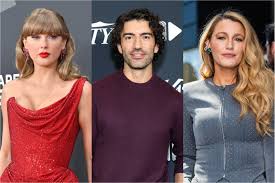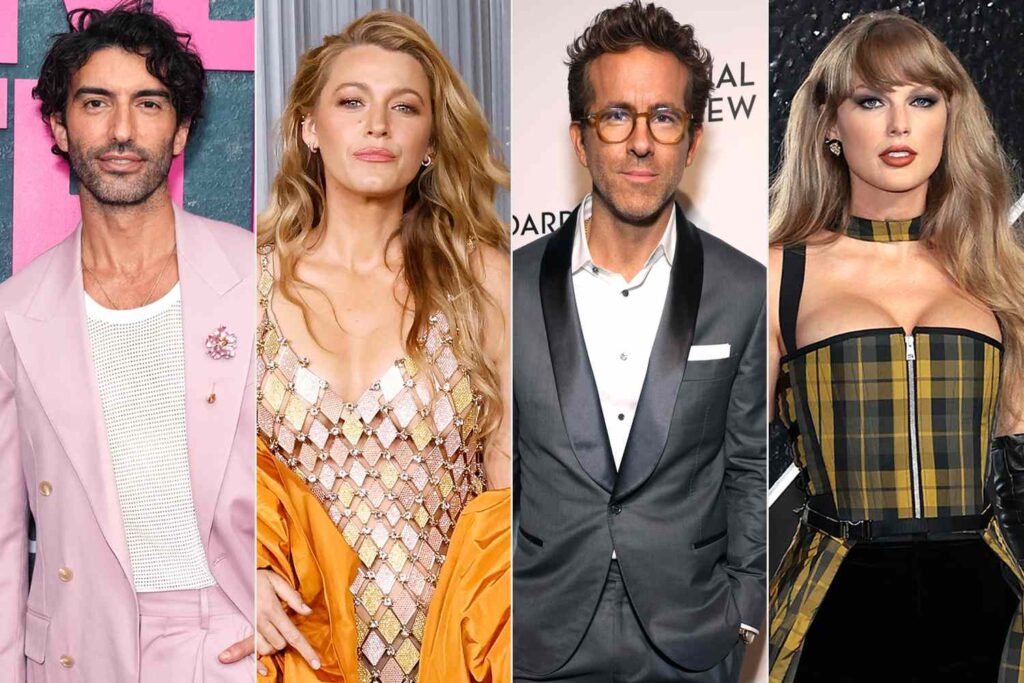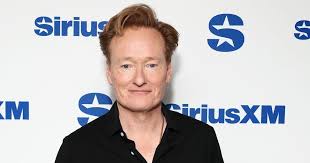What began as a film adaptation of a bestselling novel has spiraled into a high-profile legal drama involving big names like Blake Lively, Justin Baldoni, and—perhaps most surprisingly—Taylor Swift. What was once whispered in gossip forums and speculative Twitter threads has now exploded into full-blown courtroom controversy. Taylor Swift, despite being peripherally involved, has now been subpoenaed in the ongoing lawsuit surrounding It Ends With Us.
As headlines swirl and fan theories multiply, one question keeps emerging: Was Taylor Swift truly involved in the creative process, or is her name being leveraged for legal clout and media frenzy?
Let’s unpack the timeline, the allegations, and what it all means.
The Heart of the Lawsuit: Creative Control Gone Awry
At the core of the lawsuit is a dispute between Blake Lively, who stars in and reportedly contributed to the writing of It Ends With Us, and Justin Baldoni, the film’s director and co-producer. Legal documents filed by Baldoni claim that Lively overstepped boundaries, seeking more and more creative control—including rewriting entire scenes of the script.
The flashpoint occurred during what has now become an infamous rooftop scene. Blake allegedly rewrote that portion of the script and arranged a meeting at her New York penthouse to review it with Baldoni. Present during this meeting? Her husband, Ryan Reynolds, and her close friend—Taylor Swift.
This casual gathering has now become a pivotal moment in the lawsuit.

The “Dragon” Metaphor: How Taylor Got Pulled In
According to legal documents, Ryan Reynolds vocally praised Blake’s rewrite, and Taylor Swift expressed her support as well. That may have seemed like simple encouragement among friends at the time, but Baldoni now claims that their presence—and their praise—felt like calculated pressure. He alleges it was a strategic move by Blake to “flex” her powerful inner circle and secure her version of the film.
Adding fuel to this theory is a viral text message from Blake to Justin, in which she compared herself to KSI from Game of Thrones, writing:
“I’m KSI and like her I happen to have a few dragons… my dragons also protect those I fight for… you will too, I can promise.”
Fans immediately connected the metaphorical “dragons” to Blake’s famous friends—namely Taylor and Ryan—suggesting Blake viewed their support as a kind of social and professional shield.
Whether or not Taylor knew the extent to which her presence was being used is now one of the central issues in the case.
Taylor’s Side: Denial and a Rare Public Statement
Taylor Swift’s team responded swiftly and strongly after the subpoena was made public. In a rare official statement, her representatives denied any meaningful involvement in the film’s development.
“Taylor Swift had no creative role in It Ends With Us, did not participate in casting, never visited the set, and did not view a rough cut. Her only connection to the film is that she licensed the song ‘My Tears Ricochet’ for use on the soundtrack—just like 19 other artists.”
The statement went even further, calling the subpoena a publicity stunt, accusing those involved of trying to drag Taylor’s name into the media spotlight for clickbait and tabloid value.
They’re not wrong—any mention of Swift commands instant attention. But that doesn’t necessarily mean she has any legal or creative liability.
Behind-the-Scenes: What Really Happened?
Here’s what appears to be the more grounded reality: Taylor Swift was not part of any formal creative process, nor did she hold any role in production. She was simply spending time with her friend Blake Lively, who had invited her to read the script and be present for a few informal meetings.
A source close to the situation summed it up best:
“She was just there being supportive. Taylor lived this in real-time with me—but she wasn’t pulling strings. She was watching things unfold.”
In other words, Taylor’s name being tied to script feedback or casting suggestions doesn’t necessarily equal a coordinated manipulation of the film’s direction. According to insiders, when actress Isabella was being considered for a role, someone may have casually asked Taylor what she thought, and she may have responded favorably. That was it.

The Casting Confusion: More Hype Than Influence
An interview clip added more intrigue when one actor revealed that he had later learned Taylor Swift was involved in supporting Isabella’s casting. According to him, Blake and Taylor viewed her audition tape and gave it a thumbs up.
Fans quickly interpreted this as evidence of Taylor playing a decision-making role. However, industry insiders are familiar with these types of informal endorsements—it’s not uncommon for friends to share thoughts on auditions or scripts, but that doesn’t automatically make them part of the casting committee.
In Taylor’s case, her influence seems to have been circumstantial, not structural.
The Kelce-Ryan Unfollow and Friendship Fallout Rumors
As the story gained traction online, fans began noticing some social media drama. Travis Kelce, Taylor Swift’s boyfriend, reportedly unfollowed Ryan Reynolds on Instagram. That tiny digital move unleashed a wave of speculation—was there tension behind the scenes? Had Taylor and Blake had a falling out?
Rumors began to fly that the friendship was strained, especially after Taylor’s name entered the legal discourse. But sources also said the two women had patched things up. Blake was allegedly still calling Taylor one of her “dragons,” implying a sense of loyalty and sisterhood.
So, what’s the truth? Probably somewhere in between. Relationships are complicated, and when legal drama enters the picture, it’s not uncommon for even tight bonds to get shaken.
From Supportive Friend to Subpoenaed Witness
The big twist came when it was revealed that Taylor Swift had been officially subpoenaed to participate in the lawsuit. She may not end up testifying in court, but at the very least, she could be required to sit for a deposition, a legal interview under oath.
Her legal team is expected to push back hard. They argue that Taylor has no direct knowledge relevant to the core legal issues and that involving her is simply an attempt to amplify media attention.
Still, if a judge determines her testimony could clarify the dynamics of that rooftop meeting, or shed light on whether Blake’s support circle influenced professional decisions, she may be required to speak.
Blake Lively’s Legal Team Strikes Back
Blake’s lawyer, Mike Gotautle, recently issued a statement ahead of the March trial, making clear that Blake plans to testify. He described it as “the ultimate moment for a plaintiff to tell their story” and suggested the case is about far more than creative disagreements.
He argued that Blake is facing retaliation for raising concerns about harassment on set, and that the current lawsuit is meant to silence or discredit her. According to him, the media has latched onto celebrity drama and lost sight of the real issue: workplace misconduct.
Blake’s legal team claims to have emails, production notes, statements from producers, and Sony Pictures files that support her side of the story. They also plan to call multiple witnesses to testify about what they saw on set.
Where This Leaves Taylor
At this point, Taylor Swift is in a legal gray zone: not a defendant, not a plaintiff, but a high-profile potential witness. And because of her stature, anything involving her becomes magnified.
Even if she never testifies, the very fact that she’s been subpoenaed attaches her name to the mess—exactly what her team hoped to avoid.
More importantly, the situation reflects a broader question about celebrity influence and responsibility. When you’re as globally influential as Taylor Swift, even offhand comments or supportive gestures can be interpreted as pressure or involvement—especially in emotionally charged, high-stakes projects like this one.
Conclusion: Fame, Friendship, and Fallout
In many ways, this case is a study in modern celebrity entanglement. Taylor Swift didn’t produce the movie, didn’t co-write it, and didn’t appear in it—but she’s now central to its legal battle because she was in the wrong room at the wrong time.
The true legal fight is between Blake Lively and Justin Baldoni, centered around creative control, alleged harassment, and claims of retaliation. But the celebrity ecosystem surrounding it has made this more than just a workplace lawsuit—it’s a full-blown Hollywood spectacle.
As the trial approaches and discovery continues, fans and the public alike will be watching closely. Whether Taylor testifies or not, her involvement has already reshaped the narrative and escalated the stakes. One thing is certain: this isn’t just a movie—it’s a cultural moment.



